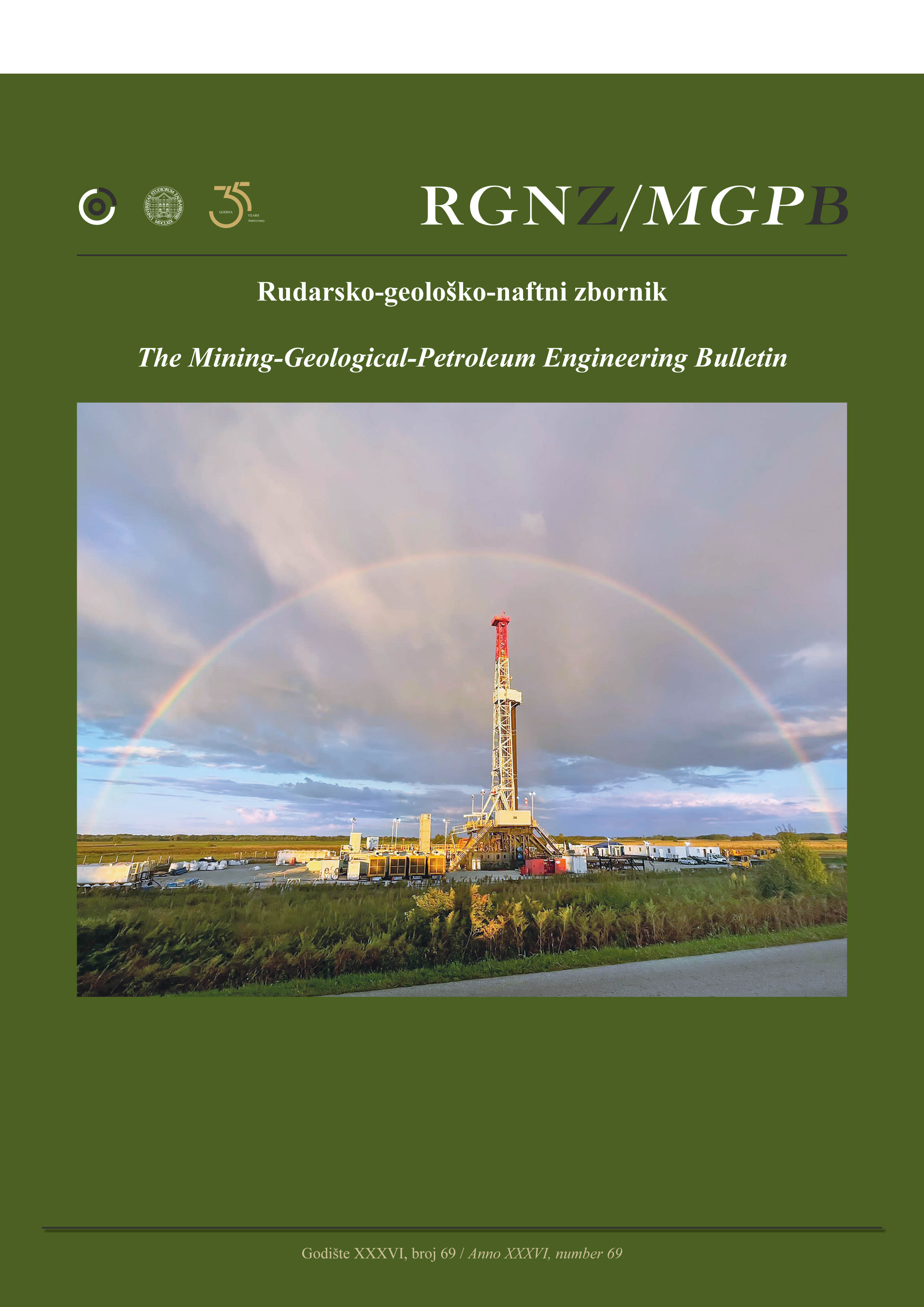An Experimental Assessment of the Impact of TiO2 and Al2O3 Nanoparticles and Tragacanth on the Augmentation of Oil Recovery in Limestone Reservoirs
DOI:
https://doi.org/10.17794/rgn.2024.3.6Keywords:
nanoparticles, polymers, EOR, limestone, reservoirsAbstract
Chemical Enhanced Oil Recovery (CEOR) methods are garnering significant global attention in light of the substantial decline in available oil resources. These techniques are employed to enhance oil recovery from various types of reservoirs by influencing critical parameters, such as the mobility of trapped oil within the reservoir rock's pore network, interfacial tension (IFT) between water and oil, wettability and the spreading behaviour of chemical solutions on rock surfaces. Nanoparticles (NPs) represent novel agents in CEOR processes, offering promising contributions owing to their enhanced surface activity at the crude oil-brine-rock interface and their impact on disjoining pressure. Incorporating polymers into nanofluids improves the dispersion stability of NPs, extending their capability for wettability alteration and achieving faster equilibrium states compared to polymer-free nanofluids. Experimental investigations involved the use of various combinations of tragacanth, TiO2, and Al2O3 with water at different temperatures for oil recovery. The results revealed that the tragacanth + Al2O3 combination at 50°C exhibited the highest recovery rate of 16.57%. The most significant decrease in interfacial tension was observed at 25°C (16.75%), while the most favourable characteristics for reducing interfacial tension (9.38%) were observed at 50°C compared to 75°C (18.3%). Tragacanth demonstrated the highest viscosity among the tested substances at 25°C, with a measured value of 4.27 centipoise (cP), while reductions of 2.87 cP and 1.45 cP were observed at 50°C and 75°C, respectively. According to the obtained results, it is appropriate to say that the solution of tragacanth + Al2O3 has shown the best performance in increasing EOR and decreasing the interfacial tension in sand-pack flooding.
Downloads
Published
How to Cite
Issue
Section
License
Copyright (c) 2024 Sobhan Anvari, Zoltan Turzo

This work is licensed under a Creative Commons Attribution 4.0 International License.
Creative Commons-BY
Authors who publish with this journal agree to the following terms:
In agreeing this form, you certify that:
- You read the ethical codex of the RGN zbornik available at journal web.
- You submitted work is your original work, and has not previously been published and does not include any form of plagiarism.
- You own copyright in the submitted work, and are therefore permitted to assign the licence to publish to RGN zbornik.
- Your submitted work contains no violation of any existing copyright or other third party right or any material of an obscene, libellous or otherwise unlawful nature.
- You have obtained permission for and acknowledged the source of any illustrations, diagrams or other material included in the work of which you are not the copyright owner.
- You have taken due care to ensure the accuracy of the work, and that, to the best of your knowledge, there are no false statements made within it.
- All co-authors of this submitted work are aware of, and in agreement with, the terms of this licence and that the submitted manuscript has been approved by these authors.
Publication licence
You retain copyright in your submitted work, according to journal license policy (CC-BY). By signing this form you agree that RGN zbornik may publish it under the publication licence. In summary the licence allows the following:
Anyone is free:
- To copy, distribute, display, and perform the work.
- To make derivative works.
Under the following conditions:
- The original author must always be given credit.
- The work may not be used for commercial purposes.
- If the work is altered, transformed, or built upon, the resulting work may only be distributed under a licence identical to this one.
Exceptions to the licence
In addition to publishing the work printed under the above licence, RGN zbornik will also enable the work to be visible online.
The journal editorial can change the licence rules anytime but it cannot retroactively restrict author(s) rights.


